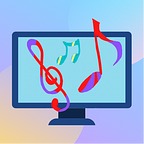Deep Learning Classification: Its Versatility
Classification seemingly has just endless applications.
Introduction
When first starting with machine learning, one may encounter the classic cat-dog binary classification model that can classify between cat and dog picture. Though it may seem simple, classification can be used in almost any scenario.
Image Classification
Image classification is the task of having a deep learning model, after being trained on an image dataset, identify what the picture is composed of. Given multiple images of different objects, people, etc, the model can then classify between each type.
Example: Animal Classification: If a zoologist wanted to count the number of each animal type in a forest, a model can be trained to distinguish between squirrels, deer, racoon, etc. and be embedded within an app. A zoologist can then use this app to scan each animal observed to keep track of how many types of animals there are. If you are hiking in the forest and you wanted to know what the animal is that you see (maybe it’s an unfamiliar animal to you), you can train a model to classify between a large variety of obscure forest animals and when you encounter an animal, you can use an app to detect what type it is and it will output the animal name (please do this within reason: if you see a cool-looking bug, for example, you can use a model-embedded app to find what type of bug it is, but if it’s a bear or a dangerous-looking animal, I would walk away, not hold your phone pointing at it it XD).
Video Classification
Video classification is the task of having a deep learning model, after being trained on a video dataset, identify what the entire video is composed of. Because videos are composed of individual images/frames, a good video level classifier must provide not only accurate frame labels but also describe hat the entire video is about.
Example: Sports Classification: If a person unfamiliar to sports or who is watching more rare types of sports wanted to easily identify what sport is being played in a video, a model can be trained to distinguish between soccer, basketball, football, high jump, long jump videos, etc. and be embedded within an app. That person can then use this app to scan each video observed to keep track of what sport is being played in each video overall.
Audio Classification
Audio classification is the task of having a deep learning model, after being trained on an audio dataset, identify what the entire length of audio is composed of. Given multiple audio files (such as of .wav format) of voices of different celebrities, music, etc., the model can then classify between each type.
Example: Music Classification: If a person wanted to know what genre of music is being played on the radio or in a video, a model can be trained to distinguish between classical, pop, rap, country, rock music files, etc. and be embedded within an app. That person can then use this app to “listen to” a song being played to detect what genre of music is being played in a video or on the radio.
Text Classification
Text classification is the task of having a deep learning model, after being trained on a dataset with sentences/paragraphs/words, identify the label this text belongs to. This can be whether the word is a noun or a verb, what language the word/phrase is from, whether the sentiment of the sentence is angry, sad, or happy, what topic the paragraph is talking about (such as food, music, sports, etc), and even more.
Example: Text Sentiment Classification: If a person wanted to easily know what emotion each Twitter user is feeling based on the paragraphs they write, a model can be trained on a paragraphs dataset to distinguish between bored, confused, happy, enthusiastic, etc. tweets and be embedded within an app. That person can then use this app to “scan” each Twitter tweet/paragraph to identify the sentiment behind each one.
Conclusion
Though classification may seem like an easy and straightforward concept in deep learning, its uses can span across multi-media and across many different types of applications.
